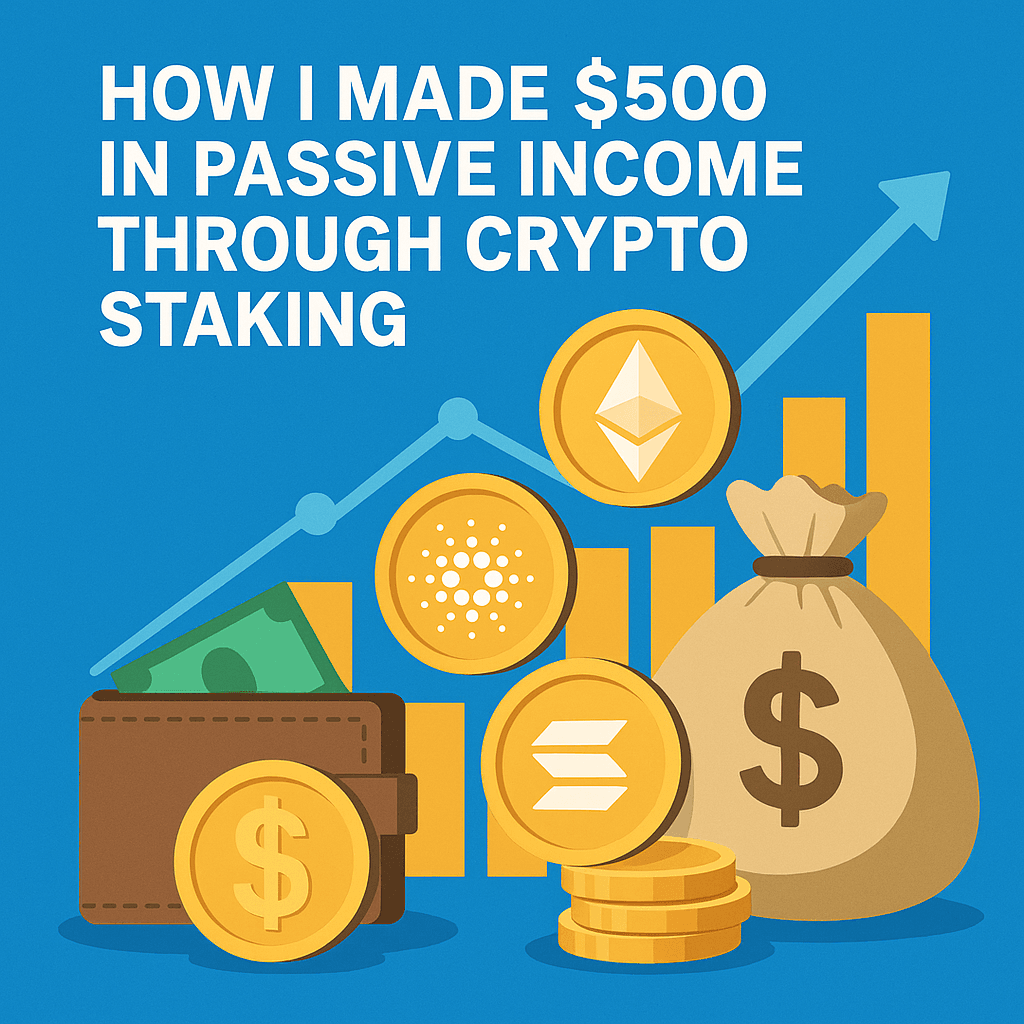If you’d told me a couple of years ago that I’d be earning passive income from crypto, I probably would’ve laughed. Like many people, I thought crypto was just about trading volatile coins and hoping for the best.
But that changed when I discovered staking.
Over the past several months, I earned a little over $500 in passive income by simply staking my crypto assets—and today, I want to share exactly how I did it, what I learned, and what you should know before diving in.
🧠 First Things First: What Is Crypto Staking?
If you’re new to staking, here’s a quick breakdown:
Staking is like earning interest on your crypto. When you stake a coin that uses a Proof of Stake (PoS) blockchain (like Ethereum, Solana, or Cardano), you’re helping support the network and, in return, you get rewarded with more of that coin.
Think of it like putting money in a high-yield savings account—except the interest rates are usually a lot better.
💼 My Setup: The Basics of What I Staked
Here’s the breakdown of what I staked:
| Coin | Amount | Platform | APR (Annual %) |
|---|---|---|---|
| ETH (Ethereum) | 0.8 ETH | Lido Finance | ~4.2% |
| ADA (Cardano) | 1,500 ADA | Yoroi Wallet | ~3.8% |
| SOL (Solana) | 70 SOL | Phantom Wallet | ~6% |
I didn’t start with a huge amount of money—around $6,000 total across these assets. I wasn’t actively trading; I just held them. So staking was the logical next step.
💡 Why I Chose These Platforms
There are tons of options out there, but here’s why I went with these:
- Lido for ETH: It’s one of the most trusted liquid staking options. You get stETH, which can still be used in DeFi.
- Yoroi for ADA: Super lightweight and beginner-friendly.
- Phantom for SOL: Easy UI and staking takes literally 2 minutes.
Important note: I avoided exchanges like Binance or Coinbase for staking because I preferred non-custodial control—meaning I held my keys.
💸 How the $500 Broke Down
Over the course of 8 months, my returns were roughly:
- ETH staking: $170
- ADA staking: $140
- SOL staking: $190
These numbers fluctuated a bit with price volatility, but the staking rewards themselves were relatively stable.
I tracked everything manually on a spreadsheet and checked in once or twice a month—definitely not a daily chore.
🚨 What I Learned (So You Don’t Repeat My Mistakes)
- Rewards aren’t instant. Some networks have a delay before you start earning (Cardano took a few epochs—around 15–20 days).
- Unstaking periods exist. On some networks, you can’t instantly withdraw your funds. Plan ahead.
- Don’t stake everything. Always keep a small amount liquid in your wallet for fees or emergencies.
- DYOR = Do Your Own Research. I read a lot before choosing platforms. There are scams out there.
🔐 A Word on Security
One thing I can’t stress enough: never share your seed phrase and always use wallets you downloaded from official sources.
Also, double-check where you’re staking. I once almost clicked a Google ad for a fake staking dApp—scammers are getting crafty.
📈 Is Staking Still Worth It in 2025?
In my opinion—yes, especially if you’re already holding long-term.
The APYs aren’t what they used to be during the DeFi summer of 2021, but they’re still far better than a savings account, and they require almost zero effort once set up.
Plus, with ETH 2.0, Solana upgrades, and other projects evolving, staking might get even more attractive (and accessible) in the future.
🙋♂️ Final Thoughts
Earning $500 without actively trading or risking my funds was honestly a refreshing change. Staking won’t make you rich overnight—but if you’re in crypto for the long game, it’s one of the simplest and safest ways to grow your holdings.
Got questions about staking? Drop a comment or hit me up—I’m happy to share more of what I’ve learned!


